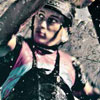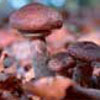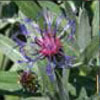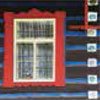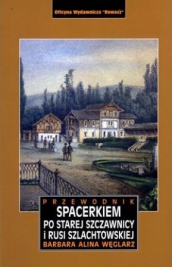Aktualności
ARTYKUŁ Z NOWEGO NUMERU: "Dunajec"
Marek Majerczak za pomocą słów i zdjęć spróbował scharakteryzować rzekę Dunajec. Zapraszamy do sprawdzenia jego artykułu jak i fantastycznych fotografii!
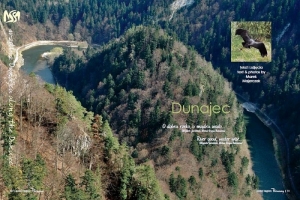
KUP NOWY WIOSENNY NUMER MAGAZYNU ----------------->
BUY THE NEW ISSUE OF MAGAZINE---------------------------->
Marek Majerczak
DUNAJEC
Szkolna ławka, malcy uczą się piosenki, którą potem będą często śpiewać na akademiach: „Płyńże Dunajcu, płyńże Dunajcu, niech fala leci, powiedz, że Polskę bardzo kochają z Krościenka dzieci...”. Pierwszy sygnał, że oglądana codziennie rzeka zaniesie swoje wody, a z nimi swoje opowieści gdzieś daleko, w głąb ojczystego kraju, może nawet do Wisły i Bałtyku.
W przekazach Dunajec pojawiał się nieustannie – dawniej komputerów i komórek nie było, telewizor oferował niewiele, dlatego ludzie odwiedzali się wieczorami i snuli historie niewiarygodne. Dzieci siadały w kącie i słuchały opowieści o tym, że sąsiad wrócił szczęśliwie ze spławu drewna, inny cały dzień woził łódką turystów w przełomie, ktoś złowił metrową głowacicę, tamten skończył dniówkę przy budowie mostu albo naciął przy brzegu wikliny na koszyki.
Niektórzy odpoczywali po morderczym treningu w klubie kajakowym, bo szykowali się właśnie do międzynarodowych zawodów. Ci, co z wierchów zeszli, porównywali oglądaną w dole rzekę do wijącego się, połyskującego w słońcu węża. Strach jeżył włosy na głowie, gdy opowieści schodziły na topielców lub złośliwe boginki przesiadujące na brzegach. Lęk budził nawet wielki rak u stóp rybaka, namalowany na ścianie starego, krościeńskiego kościoła.
Rzeka przyciągała i fascynowała. Ludzie na- uczyli się z nią żyć, wszak dawała pożywienie i zarobek. Flisacy pienińscy w swoim hymnie do dzisiaj dumnie śpiewają: „Każdy flisak zdrów, swoją łódkę pcha; chleb w Dunajcu, wiarę w sercu, szczęście w domu ma...”. Suchym latem dało się kąpać i brodzić po mieliznach, płosząc kaczki, ale wezbrane po ulewach powodzie budziły trwogę. Zimą można było przejść po lodzie, głęboko w przełom, lub nawet wjechać „na wodę” saniami czy gnatkami – po drewno, po siano schowane w szopie na polanie, lub żeby dzieciakom kulig zrobić, coby się koń w stajni nie zastoł.
Jeśli królową polskich rzek jest Wisła, to Dunajec śmiało nazwać można ich księciem. A może bardziej z góralska – harnasiem. Bo sławna jest jego moc i uroda: sił nabiera w Tatrach, pięknieje w Pieninach, by dostojeństwa nabrać pośród beskidzkich wzgórz. Nazwa jego oznacza po prostu rzekę lub wodę, niemal identycznie zwie się druga co do długości rzeka Europy, czyli Dunaj. Jakże często turyści w Pieninach mylą te nazwy...
Jo se koniusia poił,
przy dunaju, przy dunaju,
Miła wody nabrała,
z tego kraju, z tego kraju. (pienińskie)
Cały artykuł plus piękne zdjęcia, również autorstwa Marka Majerczaka, znajdą Państwo w najnowszym wiosennym numerze magazynu "Polski Region Pieniny". Zapraszamy.
English version:
A school bench, little ones learning a song they will later frequently sing at school events: "Flow the Dunajec, flow the Dunajec, let the wave go, tell Poland that children from Krościenko love it very much". The first signal that the river they see every day will carry its water, and their tales together with it, somewhere far away into the heart of the homeland, perhaps even to the Vistula and to the Baltic Sea.
In bygone days, the Dunajec was incessantly present in tales. There were no mobiles or computers, and the TV did not offer much, which is why people visited one another in the evening and span incredible and unbelievable tales. Children would sit in a corner and listen to stories about a neighbour having luckily returned from the rafting of wood, another one spending the whole day boating tourists along the gorge, another catching a one-metre huchen, working the whole day on the construction of a bridge, or cutting osier for baskets on the river bank.
Others rested after a murderous practice in the canoeing club as they were getting ready for an international competition. Those who have come down from the peaks compared the river seen down below to a winding serpent glistening in the sun. Fear made your hair stand on end when the drowned or evil water sprites lingering by the banks were mentioned. Even the huge crayfish painted at the feet of a fisherman on the wall of the old church in Krościenko inspired fear.
The river attracted and fascinated. People learned to live with it, after all, it fed and offered wealth. In their hymn, the raftsmen of the Pieniny sing proudly to this day. "Every raftsman is fit, and pushes his boat / Bread in the Dunajec, faith in the heart, / He is got happiness at home…" If the summer was dry, you could bathe and wade in the shallows, scaring away the ducks, yet the floods fed by torrential rains caused alarm. In winter, you could cross on the ice, pass even into the depth of the gorge, and even go "on water" on a sleigh or gnatki – for the wood, for the hay hidden stowed away in a shed on the clearing, or to give children a sleigh ride so that the horse does not get bored in the stable’.
If the Vistula is the queen of the Polish rivers, the Dunajec can easily be called its prince, or perhaps and more to the liking of the Highlanders – a harnaś: a brigand leader. This is because the Dunajec is famous for its power and charm: it gathers its force in the Tatras and gains beauty in the Pieniny to acquire dignity among the high hills of the Beskidy. The name denotes simply a river or water. Does not Europe is second longest river, the Danube (Polish: Dunaj) flow under a nearly identical name. How often do tourists mix up the two in the Pieniny:
I saw to my horse drinking
by Dunaj, by Dunaj,
and my beloved one draw water
from this side, from this side. (Pieniny traditional)
You can find more in the the latest issue of "Polski Region Pieniny" magazine. Enjoy!
